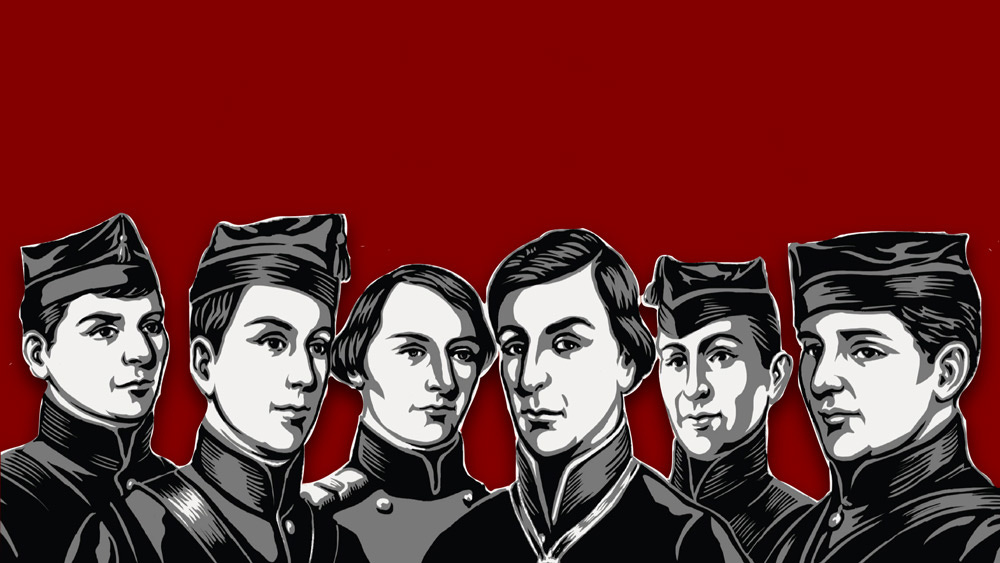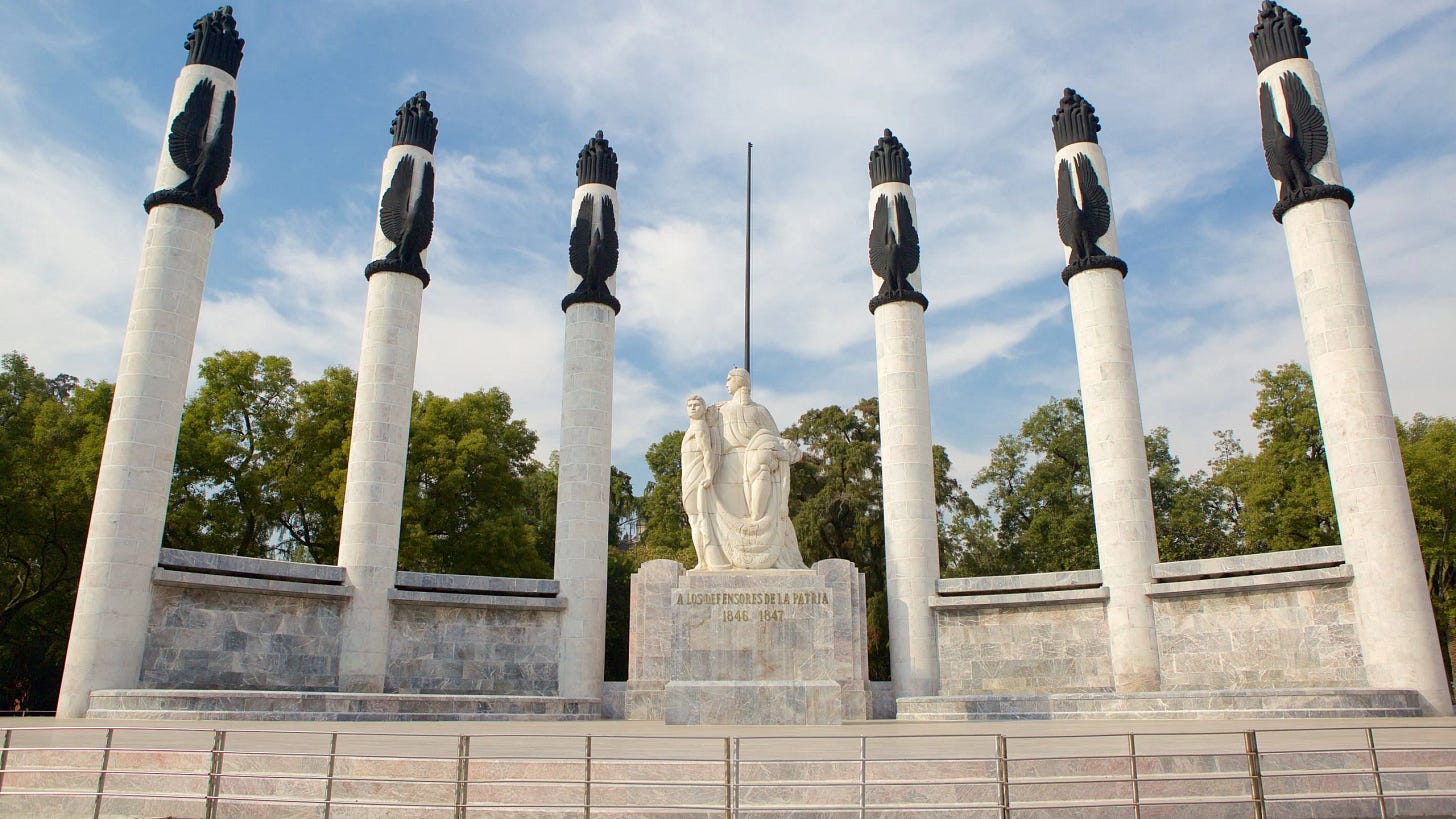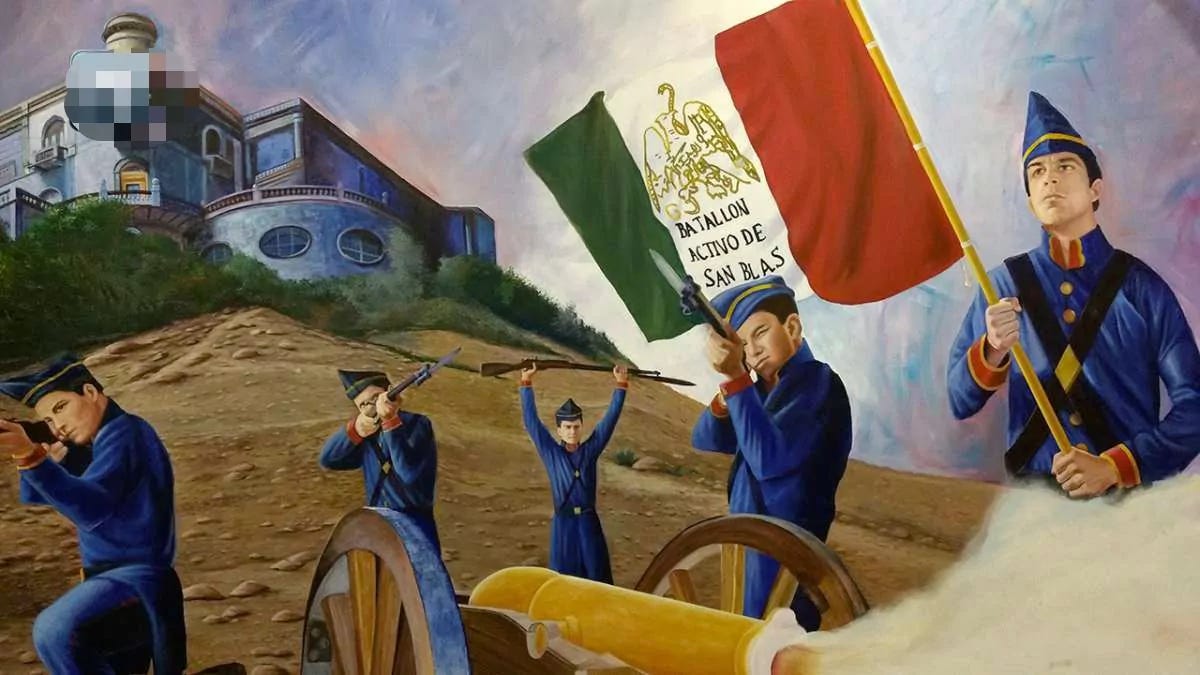How Los Niños Héroes Became a National Legend
The actual events were messier—and far more human—than the polished legend.
If you grew up in Mexico—or in a Mexican-American household—you probably heard the story. The date was September 1847. The U.S. invasion had reached the gates of the capital. On one side stood Antonio López de Santa Anna—infamous for the Alamo—on the other, General Winfield Scott.
At the heart of the battlefield loomed Chapultepec Castle, a fortress built on a hill during the colonial period, now the last barrier before the Americans could march into the capital. Mexico’s fate hung by a thread.
Inside the castle were not only soldiers but also students: cadets of the Mexican Military Academy, future officers of the republic. Most were barely teenagers, between 14 and 19 years old. As Scott’s troops closed in, the young cadets were ordered to leave—they were not required to fight. Yet many stayed. Their decision would leave an indelible mark on the nation’s memory.
The Heroic Story
The version taught in classrooms and painted in murals is pure heroism: some fifty cadets fought until their ammunition ran out, then took on U.S. troops in brutal hand-to-hand combat. One by one, they fell in the castle’s halls, courtyards, and rooftops.
In the most enduring image, a young man—sometimes said to be Juan Escutia, sometimes three cadets in different accounts—wrapped himself in the Mexican flag and leapt from the top of the fortress rather than let the invaders seize it.
That is the official story, enshrined in monuments and annual ceremonies. But like all national myths, the line between history and legend quickly blurs.
Between History and Myth
Over the years, the Niños Héroes have been pulled apart by revisionists from both extremes. Some claim they never existed at all—that the cadets were a convenient fiction, that no flag ever flew from Chapultepec’s walls. Others dismiss them as drunk, imprisoned, or fleeing down the cliffs when they were gunned down—later wrapped in a “pious” legend of martyrdom.
Neither version holds up. The truth lies somewhere in between. The Battle of Chapultepec was very real, fought on September 13, 1847. Documents from Mexico’s War Department, written just a year later, already mention most of the six cadets who would be remembered as the Niños Héroes: Agustín Melgar, Fernando Montes de Oca, Francisco Márquez, Juan de la Barrera, Juan Escutia, and Vicente Suárez.
By 1880, when a monument was erected in their honor, their names were firmly established in the historical record.
The battle was so traumatic that it became a symbol of national defeat. Poet and politician Guillermo Prieto, who witnessed the invasion, described the fall of Chapultepec with searing intimacy:
“My forest, my sanctuary, the nest of my childhood, my temple of manhood. Every tree held a memory of mine … to see it wounded, trampled by the invader, tormented me as if I were watching my father’s body desecrated before my eyes.”
The Less Cinematic Reality
The actual events were messier—and far more human—than the polished legend. Some cadets stood their ground: Vicente Suárez died at his post after firing on the invaders, and Juan de la Barrera was cut down defending a trench.
Others tried to escape: Francisco Márquez and Fernando Montes de Oca were killed while lowering themselves down the walls. Juan Escutia, too, died in that desperate attempt. Agustín Melgar was gravely wounded behind stacked mattresses and lingered for days before dying.
But not everyone perished. Photos from the late 19th century show cadets who survived, older now, their beards long, meeting to commemorate the battle. One of them even became president of Mexico at just twenty-seven.
Why Nations Need Heroes
The real story of the Niños Héroes is more mundane, more tragic: teenagers crushed by an overwhelming enemy. Yet popular memory transformed them into something greater. Every nation does this—condensing sprawling, chaotic events into symbols. The flag, the fall from the battlements, the image of boys dying for the homeland—these speak to meaning more than to precise fact.
This is not about fabrication, but about survival. Myths distill the essence of history into stories that endure. In this case, the legend of the Niños Héroes crystallized what the war meant for Mexico: a young, inexpert and courageous republic standing no chance against a relentless power.
The Shadow of Another Flag
But maybe the legend isn’t entirely fiction. Is it possible that the image of the cadet wrapped in the flag was not entirely invented, but borrowed from another moment of the battle?
This is a well-documented fact: At the foot of Chapultepec Hill that same day, General Felipe Santiago Xicoténcatl, an Indigenous commander, saw his unit’s flag bearer fall. He rushed forward, seized the banner, and wrapped it around himself. The Americans cut him down in a hail of bullets. He fell, rose again, and was hit fourteen times before finally collapsing—still clutching the flag, soaked in his blood.
It’s possible that the unforgettable image of Xicoténcatl’s death migrated upward, into the story of the cadets. If so, the legend wasn’t fabrication but adaptation: transferring the symbol of sacrifice from one figure to another, to give a defeated nation a narrative it could live with.
Coda
Nearly 180 years later, the Niños Héroes remain at the core of Mexico’s collective memory. Beyond revisionist debates, their story shows how nations construct myths—not to deceive, but to endure. At Chapultepec, a handful of cadets may have died, but something larger was born: a narrative of dignity in the face of catastrophe.
And perhaps that is the real lesson. History, once it becomes legend, no longer tells us exactly what happened. It tells us what a people need to remember in order to survive.
Follow the Daily Chela to keep up with the latest in history, politics, and culture.







